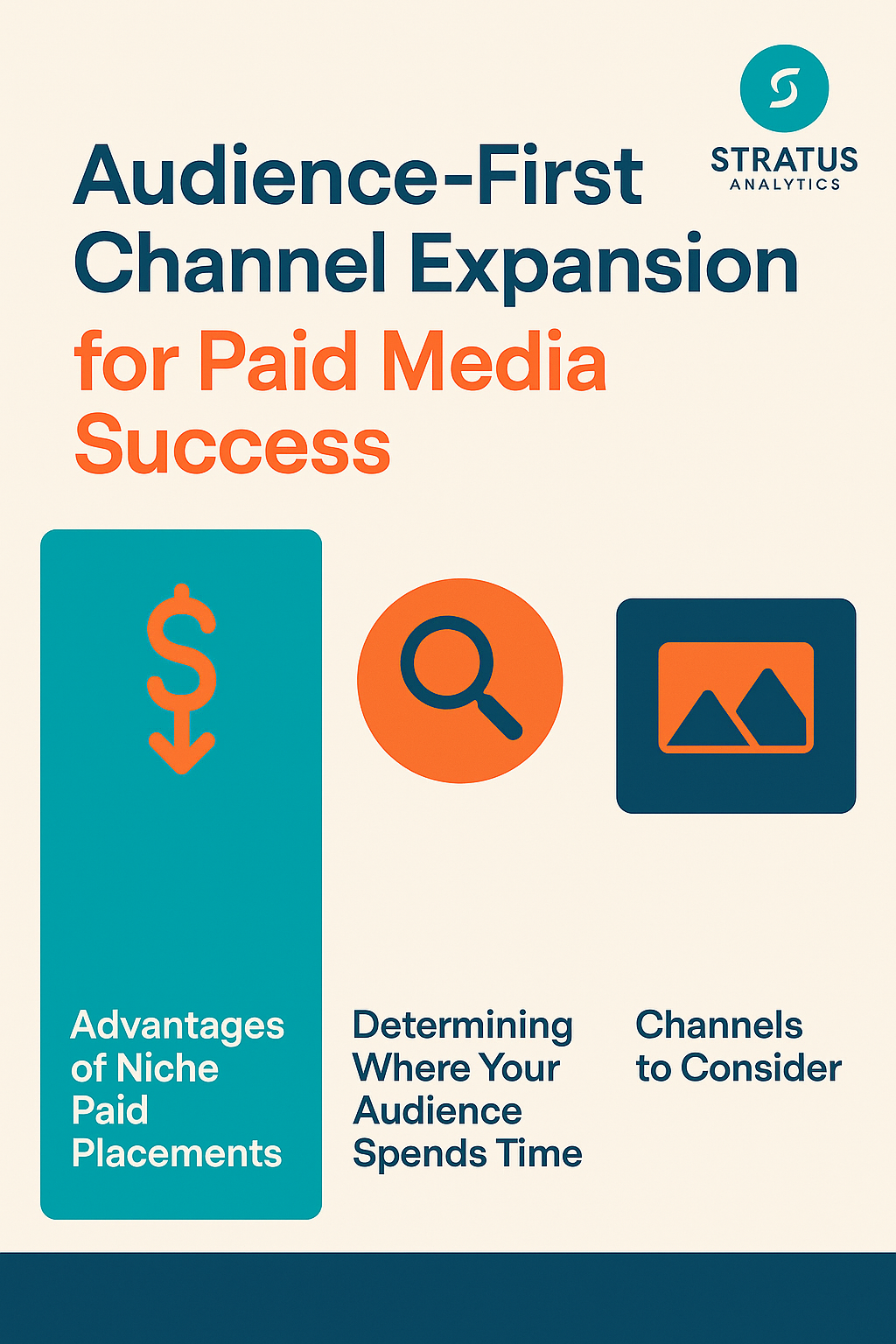When it comes to scaling paid media efforts, the first instinct many brands have is to simply invest more heavily into the largest platforms—Google, Meta, LinkedIn. While these platforms undeniably hold vast audiences, they are not always the best or most efficient next step for every business.
A more strategic approach to channel expansion involves identifying spaces where your specific audience naturally gathers. This often means thinking beyond major platforms and considering niche communities, specialized newsletters, or industry-specific media outlets. Aligning your paid media strategy to these spaces can yield better results with less waste.
Rethinking the “Obvious” Paid Media Channels
Most brands assume they need to be on Meta (Facebook and Instagram) because “everyone is there.” While it is true that Meta has billions of users, the important question is whether your target audience actively engages there in a way that makes sense for your product or service.
For many clients, expanding to Meta might feel like the default move—but upon closer inspection, it sometimes becomes clear that their real audience is spending meaningful time elsewhere.
For example:
- A B2B SaaS company might find more engaged prospects in a popular Subreddit related to IT security rather than trying to target IT managers broadly through Instagram Ads.
- A DTC brand selling eco-friendly products might find a highly responsive audience via placements in sustainability-focused newsletters instead of competing for attention in the saturated Facebook ad space.
If your next move in paid media feels too “obvious,” it might be time to slow down and look deeper.

How to Identify Where Your Audience Actually Hangs Out
Channel expansion is not about finding more people. It’s about finding the right people. Here are the steps to making smarter decisions about where to show up:
1. Analyze Customer Behavior Patterns
Start by diving into your existing customer data:
- Where do your best customers spend time online?
- What platforms refer the highest-quality traffic to your website organically?
- What newsletters do they subscribe to?
- What podcasts do they listen to?
- Are there communities or forums they actively participate in?
You can gather this information through post-purchase surveys, CRM analysis, website referral data, or customer interviews.
2. Think in Terms of Intent and Engagement
Just because an audience is present on a platform doesn’t mean they are active or engaged in a way that’s useful for your goals.
When evaluating a potential channel:
- Ask if people come to that platform or community with the mindset that aligns with your offer.
- Consider if the platform supports meaningful engagement (comments, discussions, saves, shares) rather than passive scrolling.
Engagement quality often matters more than audience size when it comes to niche channel success.
3. Prioritize Relevance Over Reach
It is tempting to be dazzled by the sheer size of a platform’s user base. But bigger isn’t always better.
A tight-knit newsletter with 20,000 highly engaged readers might outperform a general Facebook ad campaign reaching 200,000 people if the list is hyper-targeted to your ideal customer profile.
The key question becomes: Is this channel relevant to my buyer’s needs, interests, or professional life?
If the answer is yes, it deserves a serious look—regardless of size.
The Advantages of Niche Paid Media Placements
Choosing niche, high-relevance placements offers several key benefits over simply sticking to the major platforms:
1. Lower Competition and Costs
In niche spaces, you typically face far fewer competitors vying for attention. This can result in:
- Lower CPMs (cost per thousand impressions)
- Lower CPCs (cost per click)
- Higher ad engagement rates
Rather than competing for overpriced impressions in a crowded marketplace, you stand out more clearly to a smaller but more qualified audience.
2. Higher Audience Trust
Niche communities often have a strong sense of identity and trust among members. If your paid media appears thoughtfully integrated into that environment, you benefit from an inherent level of credibility.
This pre-existing trust can accelerate customer decision-making and lower acquisition costs.
3. Better Alignment With Buyer Journey Stages
Depending on your offer, niche channels can serve different stages of the buyer’s journey:
- Top of funnel: Sponsored content or ads in a niche newsletter can introduce your brand to the right audience.
- Middle of funnel: Native ads or promoted posts in discussion forums can nurture interest with high-quality engagement.
- Bottom of funnel: Retargeting users who clicked on highly specific content (like a niche guide) can drive more efficient conversions.
Niche placements allow for a more tailored approach at each stage.
Examples of Alternative Channels to Explore
Here are some examples of where to look beyond the typical Meta and Google Ads ecosystems:
| Niche Channel Type | Examples |
|---|---|
| Subreddits | r/Entrepreneur, r/SaaS, r/Fitness, r/PersonalFinance |
| Newsletters | The Hustle, 2PM, Morning Brew (B2B and B2C lists exist) |
| Industry Websites | TechCrunch, FoodNavigator, Business of Fashion |
| Podcasts | Advertising on shows related to marketing, SaaS, fitness, finance, depending on niche |
| Vertical Ad Networks | Specific ad networks built for healthcare, tech, education, etc. |
| Slack Communities | Paid placements or sponsorships in professional Slack groups |
When thoughtfully selected, these alternative options can yield a better return than scaling spend in generic environments.
Building a Smarter Channel Expansion Strategy
Before you add a new paid media channel to your marketing mix, ask yourself:
- Does this channel bring me closer to my ideal buyer?
- Is my competition overlooking this space?
- Can I create messaging that fits naturally into the platform’s culture or content style?
Channel expansion should feel targeted and deliberate, not reactive. Take the time to research, test, and iterate on a few niche channels rather than blindly following the biggest audiences available.
In the long run, this approach leads to better marketing efficiency, higher quality leads, and more sustainable growth.

Hi there! I’m Scott, and I am the principal consultant and thought leader behind Stratus Analytics. I have a Master of Science degree in marketing analytics, and I’ve have been providing freelance digital marketing services for over 20 years. Additionally, I have written several books on marketing which you can find here on Amazon or this website.
DISCLAIMER: Due to my work in the packaging industry, I cannot take on freelance clients within the packaging manufacturing space. I do not want to provide disservice to your vision or my employer. Thank you for understanding.
